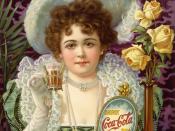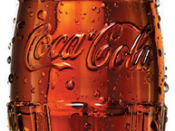Urban Legends
Urban Legends emerge mysteriously and spread spontaneously in varying forms. This popular form of storytelling or folklore usually contains elements of horror and or humor and tries to relay a moral or message. These myths are often memorable and make good storytelling. Some urban legends are true and others are false, but it is the quality and believability of these stories that keeps us captivated. It is the plausibility of these stories that make them so creditable and allows us to consider and re-tell them. We will look at some of the more popular or famous of these urban legends, whether there is any truth in them or are they completely fabricated.
First, Coke or Coca-Cola used to contain cocaine. This legend or myth is no myth. Coca-Cola was named back in 1885 for its two main ingredients: extract of coca leaves and kola nuts. Just how much cocaine was originally in the formula is hard to know, but the drink undeniably contained some cocaine at its creation.
Coca Cola's developers, Candler and Robinson worked on perfecting their formula in 1891. At that time, a national debate was beginning over the negative use of cocaine and its manufacturers were defending themselves against the charges that cocaine use might lead to a habit. When Candler and Robinson were promoting the medicinal benefits of cocaine, they put a trace of the coca leaf extract in their syrup.
Cocaine continued to be an ingredient in the syrup in order to protect the trade name "Coca-Cola". Candler believed that the product name had to be descriptive and that it must have some by-products of the coca leaf and kola nuts in the syrup in order to protect his right to the Coca Cola name. There was no patent pending on the syrup,



Urban Legends
Good paper. Urban legends are definitely something that will pull a readers attention. I enjoyed reading about the last one especially. Creepy stuff. Good work.
2 out of 3 people found this comment useful.